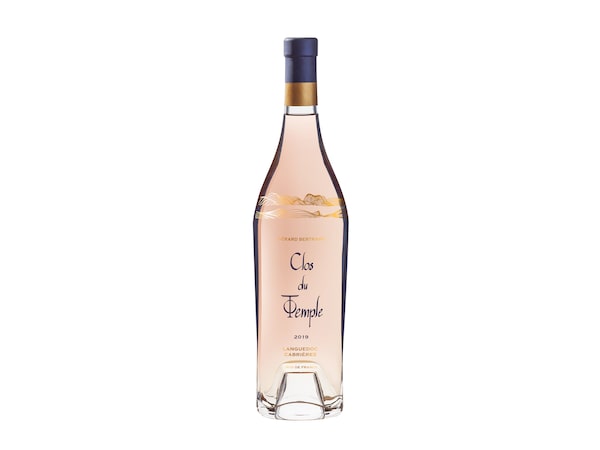
If you value flavour and texture as much as colour in a rosé, finding something desirable priced under $15 is becoming increasingly difficult.Ketut Subiyanto/Pexels/stock
Celebrated for its fun, fresh and easy drinking nature, rosé continues to struggle for respectability. Unlike other styles of wine, it’s likely to be defined by price. Pay more than $15 per bottle and you’re being gouged.
That price prejudice might make sense if you’re just looking to pose with something pretty and pale in your glass for a social media post – #roséallday! But, if you care about flavour and texture as much as colour, finding something desirable priced under $15 is increasingly difficult. The price for bottles from traditional sources in the South of France and northern Spain as well as local vineyards continues to climb.

The Clos du Temple rosé 2020 is available for $279.99 via Calgary’s Craft Cellars.Supplied
Twenty years ago, most North American wineries would produce their rosé as a by-product. It was common practice to drain juice out of different tanks of fermenting red wine to create a blended rosé that usually included additional white wines to adjust the colour, flavour and texture.
Today’s styles are more intentional. Production increasingly starts in the vineyard, with specific rows of vines pruned and farmed to produce a desired style of wine. Top quality grapes are harvested as a result, with cabernet franc, pinot noir and gamay being leading candidates for Canadian wineries. Serious producers have also invested in new equipment, starting with presses that gently extract the juice from grapes, with minimal movement, to provide a more pure and fruity juice for fermentation.
Rosés are typically released quickly, which keeps some production costs down compared with wines that are matured for months or years in barrel or bottle prior to release.
Premium red and white wines are often prized for their complexity and depth of flavour. Those are hallmarks for well-made rosé along, usually conveyed with a purity or finesse that adds to their refreshing character. Wines produced by Domaine Tempier in Bandol and Domaine Ott and Domaine de L’Ile in Provence are beautiful expressions that are highly sought after by wine lovers around the world.
Winemaker Gerard Bertrand is doing his part to raise the profile of rosé through his ever-expanding portfolio from the South of France. Priced around $20, Bertrand’s Côtes des Roses Rosé is one of the best-selling pink wines in Canada. His most ambitious project is the Clos du Temple winery in Cabrières, which produces the world’s most expensive rosé, a barrel-aged blend of cinsault and grenache with syrah, Mourvèdre and viognier. It’s an outstanding wine, with a rich and refreshing character that has potential to age. For anyone interested, the Clos du Temple Rosé 2020 is available for $279.99 via Calgary’s Craft Cellars.
Of course, you don’t need to pay that amount to get a good or great bottle of wine of any colour or style. But, in this economy, you might find you need to pay more than $15 for an enjoyable rosé.